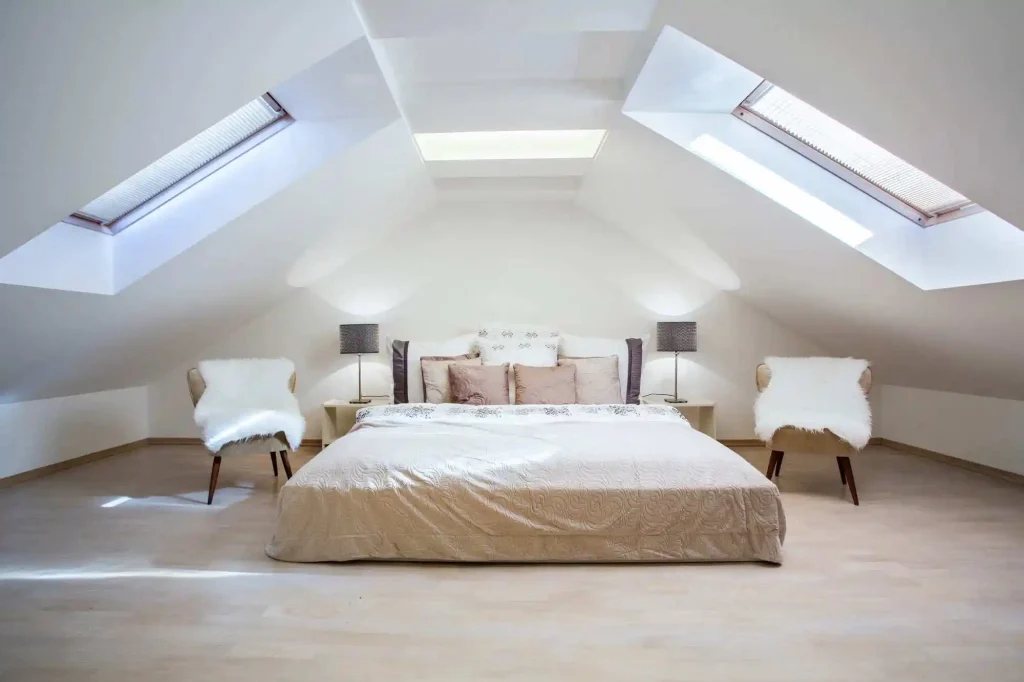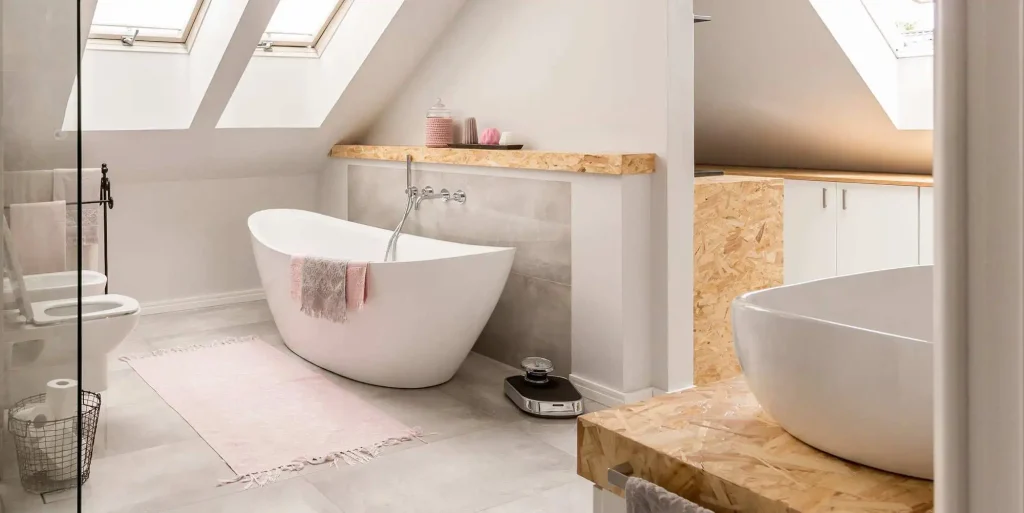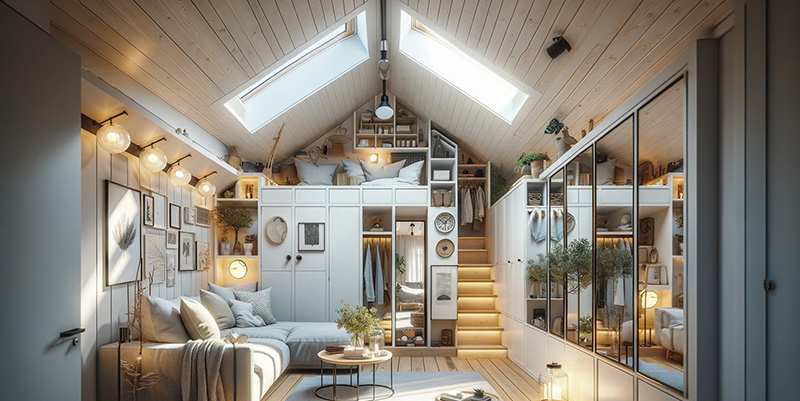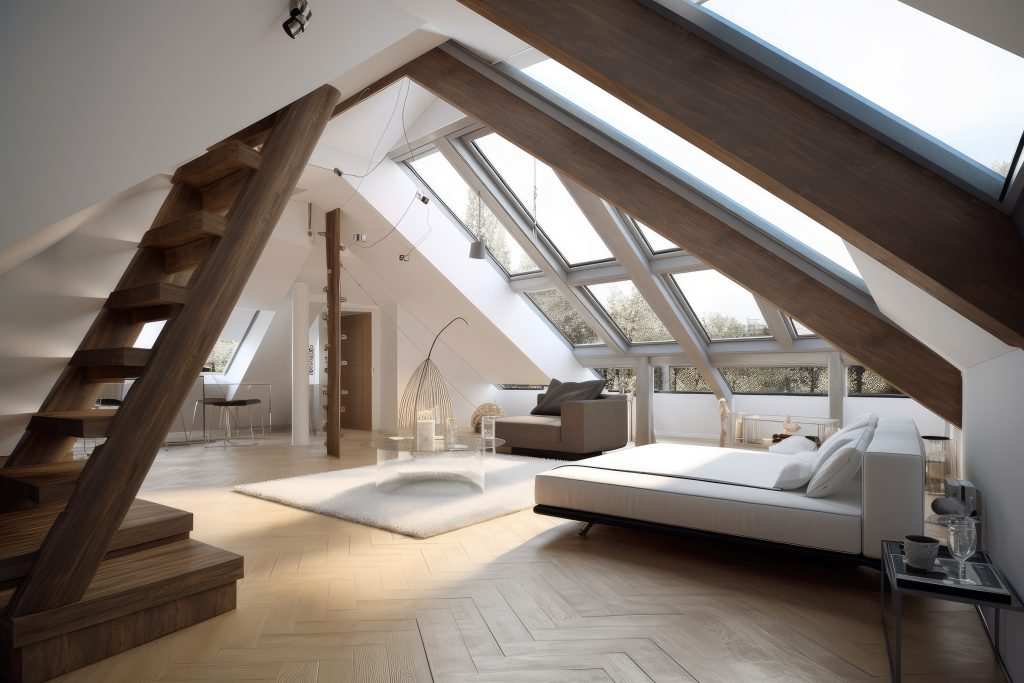The journey of transforming your attic into a luminous and airy domain hinges on the strategic selection of windows, a decision that profoundly influences the aesthetics and functionality of your loft conversion.
The right windows not only invite an abundance of natural light, casting a vibrant sheen over every corner but also facilitate a breath of fresh air, vital for a healthy living environment.
This initial choice sets the tone for the entire project, melding practicality with design elegance, ensuring your loft becomes a welcoming retreat that maximises space and comfort.
As you delve into this transformative process, understanding the myriad of window options available, and how they align with your architectural vision, becomes paramount in crafting a space that feels both expansive and intimately connected to the outdoor environment.
Understanding Different Types of Loft Windows
Navigating the array of loft window options is akin to curating elements of light and space. Skylights, with their sleek integration into the roofline, offer a direct conduit for sunlight, bathing the loft in natural warmth and brightness, while preserving the integrity of your home’s silhouette.
Dormer windows extend beyond mere light sources; they protrude from the roof, providing additional headspace and a dynamic architectural element that enhances the loft’s visual appeal.
For those exploring modernity, roof lanterns stand out as sculptural installations, drawing light from multiple angles into flat-roofed conversions, and merging aesthetic allure with functional brilliance.
Each window type presents its unique blend of benefits, from spatial enhancement to light maximisation, guiding you towards a choice that resonates with your style and the structural demands of your conversion.
Factors to Consider When Choosing Windows
Selecting the perfect windows for your loft conversion is a nuanced journey that goes beyond mere aesthetics, delving into the realms of orientation, ventilation, and energy efficiency.
The direction your loft faces plays a crucial role in light management, with south-facing spaces enjoying abundant sunlight, necessitating thoughtful consideration of heat control and light diffusion to maintain a comfortable atmosphere.
Ventilation, a cornerstone of loft conversion design, hinges on the capability of windows to promote airflow, essential for a fresh and moisture-free environment.
This pursuit of breathability must be balanced with the window’s ability to insulate and conserve energy, ensuring your loft remains a sanctuary of comfort regardless of the season. As these factors interweave, they form the blueprint for a window selection process that harmonises with your vision, creating a loft that is both visually striking and inherently practical.
The Role of Windows in Ventilation
In the upper echelons of your home, where air can easily stagnate, the role of windows transcends mere aesthetics, becoming pivotal in sustaining a vibrant and healthful atmosphere.
Optimal ventilation strategies, facilitated by carefully chosen windows, ensure a constant exchange of air, vital for dispelling moisture and maintaining a crisp, invigorating environment.
This dynamic circulation is crucial in spaces like bedrooms and bathrooms, where air quality directly impacts comfort and well-being.
Through strategic window placement and functionality, your loft can enjoy the benefits of natural ventilation, reducing the need for mechanical systems and enhancing the overall energy efficiency of your home.
Planning and Permissions
Embarking on a loft conversion often entails navigating the complexities of planning permissions, a crucial step in ensuring your project aligns with local regulations.
This is especially true when introducing new windows or altering the roofline, as such modifications can impact the external appearance of your property.
Early consultation with planning authorities and professionals can demystify this process, providing clear guidance on permissible changes and helping you craft a design that is both compliant and visually harmonious.
As you chart the course of your conversion, understanding these legal contours is essential, laying the groundwork for a project that not only transforms your living space but does so in harmony with regulatory expectations.
Installation Considerations
The installation of loft windows is a process that demands meticulous planning and precision to ensure not only the structural integrity of your home but also the optimal performance of the windows themselves.
This phase requires a deep understanding of the architectural framework of your loft, as the strength of the existing structure will dictate the size and type of windows that can be installed.
Professional assessments are crucial at this juncture, providing insights into necessary reinforcements or alterations to accommodate your chosen windows.
Moreover, the installation process offers a prime opportunity to incorporate additional insulation around the window frames, enhancing the thermal efficiency of your loft space.
By prioritising these considerations, you embark on a path that not only elevates the aesthetic and functional quality of your loft conversion but also ensures seamless integration of the new windows into the fabric of your home.
Conclusion
Choosing the right windows for your loft conversion is a journey that intertwines functionality with aesthetics, creating a space that is imbued with light, air, and a sense of openness.
This decision impacts not just the immediate environment of your newly converted loft but also the overall energy efficiency and comfort of your home.
As you navigate through the myriad of considerations, from the type of windows to their placement and the legal requirements they entail, remember that each decision brings you closer to realising a space that reflects your vision.
A loft conversion is more than just an addition of space; it’s an opportunity to redefine your home’s relationship with the natural world, leveraging light and air to create a haven of tranquillity and comfort.





